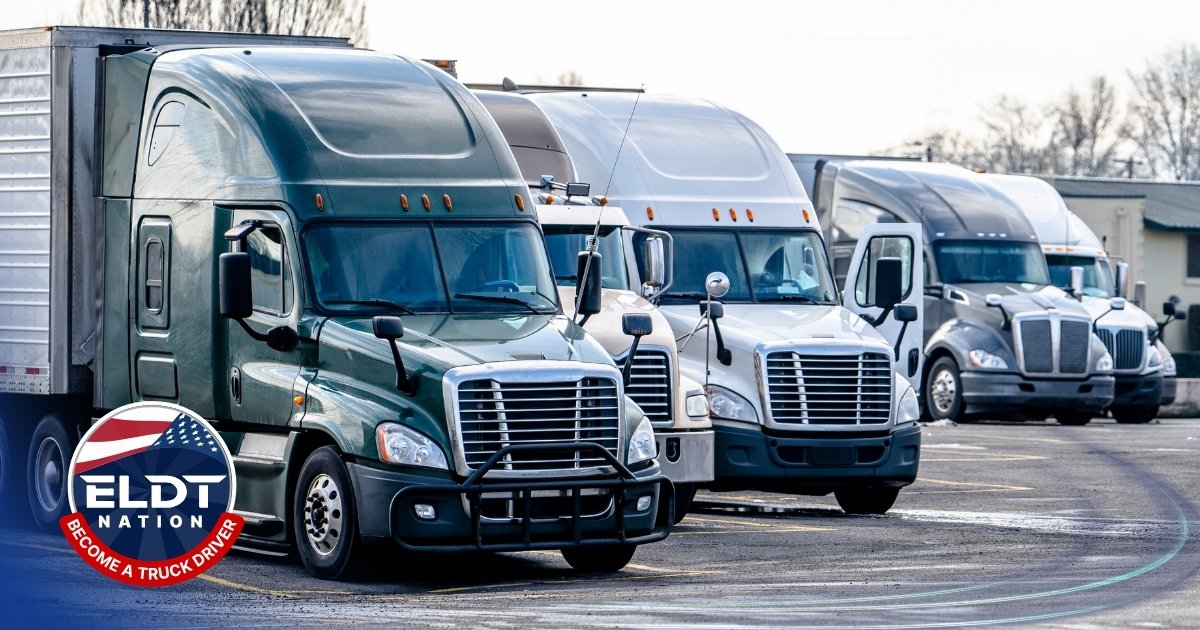Complete Average Trucker Salary Guide by State
Let's break down the numbers you really want to see. While there's a national average salary for truckers, your real-world earnings depend on your experience level, where you operate, and the type of freight you haul. Think of the average figure as a starting point, not a final destination.
For instance, new drivers just entering the industry typically start in the $45,000 to $55,000 range. As you gain more time on the road, your earning potential grows significantly. Most experienced truckers can expect to earn between $70,000 and $85,000 annually, with top earners pushing even higher.
The table below provides a clear look at how experience directly impacts your potential salary.
As you can see, gaining a few years of experience can dramatically increase your income. The most significant jump often happens after your first year behind the wheel.
What Top Earners in the Trucking Industry Make
Recent industry data reveals that the national average salary for truck drivers is now around $92,720 per year. This figure shows the high income potential available in the field. For example, dedicated drivers who consistently log over 2,500 miles weekly at a rate of 60 to 85 cents per mile (CPM) can see their annual earnings fall between $85,000 and $120,000+.
States Where Truckers Earn The Most Money
Your location plays a massive role in your paycheck as a truck driver. The average salary can change significantly depending on which state you call your home base. But a higher wage isn't the full picture; it's essential to compare that number with local living expenses to know your real earning power.
Note: The figures presented are approximate and may not be fully accurate.
High Pay and High Demand States
Some states consistently offer better paychecks because of unique economic factors and strong freight demand. These locations often reward drivers for handling specific challenges, such as difficult weather, high-volume ports, or booming industries.
As the table shows, states like North Dakota offer a strong balance of high pay and a moderate cost of living. In contrast, drivers in Alaska are compensated well for its challenging environment and higher expenses.
Remember that a higher salary often comes with trade-offs. While states like New York and Massachusetts offer competitive pay, they also bring heavy traffic and a much higher cost of living, which can impact how much of that paycheck you actually keep. Always weigh the pros and cons before making a move.

How CDL Endorsements Add Thousands To Your Paycheck
Looking for a direct path to a higher average salary trucker income? Adding endorsements to your Commercial Driver's License (CDL) is one of the most effective strategies. These official qualifications prove you can handle more specialized or demanding loads, making you a more valuable asset to any trucking company.
For example, securing a Hazmat (H) endorsement can add $10,000 to $15,000 to your annual pay. This significant pay increase comes from the extra skill and responsibility required to safely transport materials that other drivers cannot. You can find the required training to get started with an online Hazmat endorsement course.
Other endorsements also create new career paths. The Passenger (P) endorsement opens the door to steady local jobs with better hours and benefits, while the Double/Triple (T) endorsement allows you to haul more freight, which often comes with higher pay per mile. The Federal Motor Carrier Safety Administration (FMCSA) outlines all available endorsements.

As the official chart shows, each endorsement requires a specific knowledge test. Earning these credentials is a clear way to demonstrate your expertise, expand your job opportunities, and directly increase your earning potential.
Pay Breakdown By Trucking Job Type
The type of freight you haul and how far you take it directly shape your paycheck and daily life. Your average salary as a trucker can vary significantly depending on whether you're home every night or spending weeks on the road. Each job type offers a different balance of pay, home time, and on-the-job demands.
Over-the-Road vs. Local Work
There's a major difference in pay structure and lifestyle between long-haul and local driving. Long-haul drivers are typically paid by the mile, earning an average of $0.60 to $0.70 per mile, but this comes at the cost of extended time away from home.
In contrast, local truck drivers usually earn a set annual salary, often between $50,000 and $65,000. The biggest advantage for local drivers is the ability to be home every night, making it a popular choice for those with families.
Specialized Freight Pay
Hauling specialized freight requires extra skill and responsibility, which translates to higher earning potential. Drivers with the right endorsements and experience can command top-tier salaries.
- Flatbed Drivers: These drivers earn premium rates, often between $65,000 to $75,000, for their expertise in securing oversized or unconventional loads and their willingness to work outdoors.
- Reefer Drivers: Hauling refrigerated goods offers similar pay to flatbedding, with the added benefit of more consistent, year-round work transporting temperature-sensitive products.
- Tanker Drivers: This is one of the highest-paying segments, with annual salaries ranging from $70,000 to $85,000. The higher pay reflects the advanced skill and safety protocols required to transport liquids and hazardous materials.
Why Driver Shortage Means Higher Pay For You
The trucking industry is facing a significant driver shortage, and that's good news for your paycheck. With companies needing drivers badly, they are competing to attract and keep good talent. This means they are offering better pay packages, substantial signing bonuses, and improved benefits that were rare just a few years ago.
This market gives you real power when looking for jobs or negotiating your compensation. Right now, the industry is short approximately 80,000 drivers, a gap that directly pushes the average salary for a trucker higher as companies increase wages to fill seats.
This isn't a temporary trend; the demand for skilled professionals continues to grow. You can use this situation to secure a better job or ask for a raise, making it the perfect time to evaluate competing offers. Learn more about how the driver shortage affects pay.

Specialized Freight: Where The Big Money Really Is
If you are willing to develop special skills, you can earn serious money in trucking. Handling specialized freight is one of the quickest routes to boosting your average salary as a trucker. This type of work moves beyond standard dry van loads and demands more responsibility, training, and expertise—all things that companies will pay a premium for.
Top-Paying Specialties
Different specialties present unique challenges and, in return, offer excellent pay. Here are a few of the most profitable areas to consider:
- Oversized & Heavy Haul: Transporting massive equipment like construction machinery or wind turbine blades can push your annual earnings to $80,000–$100,000+. This work requires extensive training to manage complex routes, secure permits, and safely handle oversized loads.
- Car Haulers: This job demands precision loading and careful handling to protect valuable cargo. Skilled car haulers often build a base of loyal, high-paying customers who trust their ability to transport vehicles without a scratch.
- Hazmat & Tanker: These specialized roles frequently command higher pay due to the increased skill and risk involved. Because the demand for qualified Hazmat and Tanker drivers is high, your earning potential is significantly increased.
Your Roadmap To Higher Trucking Income
Here is your practical action plan to maximize your trucking income. Focus on these key areas to take control of your earnings and build a more profitable career on the road.
- Get High-Value Endorsements. Start by getting the certifications that matter most. Hazmat and Passenger endorsements typically offer the biggest pay bumps because they open up more specialized, higher-paying loads.
- Target the Right Companies. Research companies and regions known for better pay, but always look at the full picture. Consider the total compensation package, including benefits, home time, and overall job security, not just the cents-per-mile rate.
- Prove Your Reliability. Build a strong reputation with your dispatchers. Being dependable, on-time, and a good communicator will help you get access to the best loads and more consistent work.
- Master Your Tax Deductions. Keep detailed records of all your work-related expenses. Tracking everything correctly can help you save thousands of dollars each year through tax deductions.
- Plan Your Long-Term Path. Think about where you want to be in a few years. Decide whether your goal is to remain a top-earning company driver, move into a lease-purchase agreement, or become a fully independent owner-operator.
Of course, every driver's journey starts with the proper license. You can learn more in our article about how to get a CDL.
Ready to drive your career forward? ELDT Nation provides the FMCSA-approved training you need to get started or add valuable endorsements. Enroll today at ELDT Nation.

![List of 10 Top Trucking Companies in the US [+Details]](https://cdn.prod.website-files.com/67d12c81bfd50e1239d7b0ff/691fff6668348073f5d2ff2a_List%20of%2010%20Top%20Trucking%20Companies%20in%20the%20US%20%5B%2BDetails%5D.jpg)





